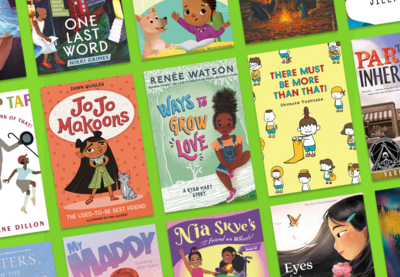At Learning for Justice, we love to read. Here are some of our favorite book recommendations for children (elementary to middle grades) that affirm identities, celebrate diversity and highlight justice. We are happy to share them with you and hope that you will enjoy and share them too.
We will continue to update this page with new book reviews.
Growing Readers
(Elementary School and Younger)
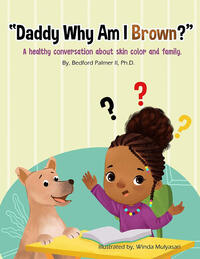
Daddy Why Am I Brown? A Healthy Conversation About Skin Color and Family celebrates the rich tapestry of human phenotypes, offering a thoughtful guide on discussing skin tones with kids. While skin color may offer clues about where a person’s ancestors came from, we must get to know people to learn anything about their behaviors or background. Written by Bedford Palmer II, Ph.D., and illustrated by Winda Mulyasari, this book emphasizes the joys and rewards of taking the time to do that work. Pick up this book for an accessible conversation starter. A great guide for helping children understand the differences among race, skin color, ethnicity and culture.
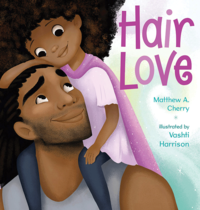
Hair Love teaches self-love and exemplifies representation for Black people and Black culture. Matthew A. Cherry’s book follows a little girl named Zuri as she works with her father to create a perfectly coifed hairstyle. In a time when Black youth are penalized for wearing their natural hair, this story shows an appreciation for the magic of grooming coarse or kinky hair, represented by Afros, locs, braids and a head wrap. The tenderness of Black fatherhood is also on display, offering plenty of heartwarming moments. A push against attempts to disparage those who dare to take pride in the way they look.
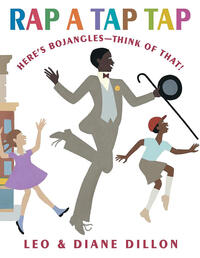
Rap a Tap Tap: Here’s Bojangles—Think of That! by Leo and Diane Dillon, includes the authors’ rich illustrations combined with wonderful rhymes that are sure to capture the imaginations of young readers. This 2002 publication provides a compelling introduction to the artistry of Bill “Bojangles” Robinson, a tap-dancing legend who broke racial boundaries in the U.S. entertainment industry—on the vaudeville stage, on Broadway, on radio and in Hollywood—throughout the early 20th century. This lovely and lively book will delight young readers and introduce them to an artist with an important place in the history of U.S. popular culture.

“Grandma is the original warrior,” writes Junauda Petrus in Can We Please Give the Police Department to the Grandmothers? Illustrated by Kristen Uroda, this richly woven tapestry of words honors the liberatory inroads our elders made while also imagining a world where care and support rule the day. Beautiful imagery accompanies this magical aural experience. This loving work will spark imaginations and offer a fabulous example of how to freedom dream.
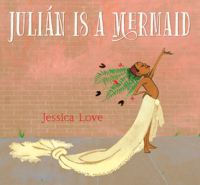
When Julián spots three mermaids on the subway home, he is in awe. He knows that he is a mermaid too—but he’s not sure what his abuela will think when he dresses up like one. A magical story written and illustrated by Jessica Love, Julián Is a Mermaid provides children the opportunity to see how important it is to express who you truly are—and how wonderful it is when the people you love encourage you to accept yourself. Warmth and love radiate from this colorful story of self-acceptance.
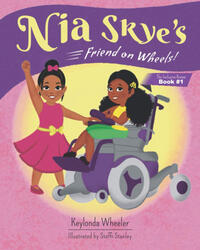
Keylonda Wheeler writes in the introduction to Nia Skye’s Friend on Wheels that, “it’s so important that disabled people are shown in everyday reading just living their lives.” In this charming book—the first in a series titled The Inclusive Krewe—Wheeler accomplishes that goal by highlighting the friendship between two kindergarten-aged girls who learn from each other as they arrange playdates and engage in fun family activities. Steffi Stanley’s delightful illustrations make this story pop. Wheeler’s work models inclusiveness is the most wonderful way. Children will love this story!
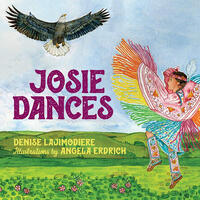
Josie Dances, by Denise Lajimodiere, is a beautiful story of a young Ojibwe girl preparing for her powwow debut. This book, with wonderful illustrations by Angela Erdrich, explores the intersection of Indigenous culture, family, nature and traditions—offering an essential perspective to any library collection. With help from her family and the support of her community, Josie gathers what she needs to receive her spirit name and participate in her first powwow. An essential telling of Ojibwe culture that will have readers celebrating and honoring Josie’s journey.

Written by Carole Lindstrom, an Anishinaabe/Métis author tribally enrolled with the Turtle Mountain Band of Ojibwe, and illustrated by Michaela Goade, an enrolled member of the Tlingit and Haida Indian Tribes of Alaska, We Are Water Protectors connects Indigenous traditions to present-day activism. Facing the threat of a pipeline—a manifestation of a tale of the snake that will threaten the land—a young water protector explains why water is sacred and vows to defend it. This beautifully illustrated and profoundly told tale is a call to action insisting that Indigenous people are not only still here but still at the forefront of the fight for climate justice.
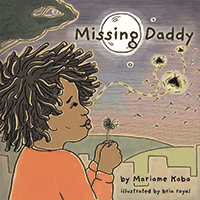
Missing Daddy by Mariame Kaba addresses the youngest victims of the prison industrial system—children with loved ones who are incarcerated. Alongside beautiful illustrations by bria royal, Kaba renders in detail the experience of children who may not fully understand their loved ones’ extended absence. The story’s description of ridicule at school, domestic stress when caretakers manage households alone and enforced separation from a beloved father may help young readers feel less alone as they manage the impact of long-term and long-distance incarceration on their families and themselves. Kaba’s emotive work helps children, their caretakers and other interested parties acknowledge the painful impact of incarceration.

In Eyes That Kiss in the Corners, written by Joanna Ho and illustrated by Dung Ho, we learn about a child from an East Asian family who recognizes that her eyes are different from the eyes of the other children around her—and those differences are just fine! Unlike her peers, the protagonist’s eyes “kiss in the corners and glow like warm tea,” just like the eyes of her mama, amah and sister. With a sweet departure from identity-affirming books rooted in struggle, this one simply celebrates, and that’s a beautiful thing. No existential crisis here—just heart-warming self-love and family pride.
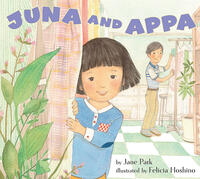
In Juna and Appa, a heartwarming book by Jane Park with illustrations by Felicia Hoshino, Juna helps her father, Appa, at their dry-cleaning shop. When a customer berates Appa for losing a fancy jacket, Juna uses her imagination to search for the jacket, running into different fathers in the animal kingdom. These animals help Juna remember the special relationship she has with Appa, including the sacrifices they make for each other. This book is Park’s beautiful love letter to the children who grow up working in their family’s stores, just like she did.
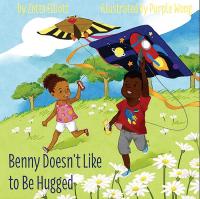
Benny Doesn’t Like to Be Hugged, written by Zetta Elliott and illustrated by Purple Wong, tells the heartwarming story of friendship between a girl and a boy, Benny, who has autism. Illuminating Benny’s neurological difference, which includes heightened sensitivities, this book encourages children to recognize and celebrate diversity, from race to disability. It also reinforces the importance of respect through the loving and accommodating actions of peers and adults.

It Feels Good to Be Yourself: A Book About Gender Identity by Theresa Thorn and illustrated by trans artist Noah Grigni helps young readers understand gender expression and affirms the spectrum of gender identities. The book includes a glossary, a note to readers about pronouns and a list of resources that focus on gender identity. Enchanting illustrations will delight young readers as they learn that all people are valued just the way they are. This beautiful book is a great introduction to the many expressions of gender in the world.
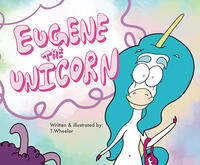
In Eugene the Unicorn: A Kid’s Book To Help Start LGBTQ Inclusive Conversations, author and illustrator T. Wheeler demonstrates how to engage in age-appropriate discussions about difference, diversity and acceptance. The rhyming text will certainly engage little listeners as they learn that the thing we have in common is that we all have individual differences. In this charming book, Wheeler encourages self-acceptance, celebrates diversity, and writes, “No one can be a better you than you.” Children will love the rhythm of this read-aloud book with its specific focus on inclusivity.
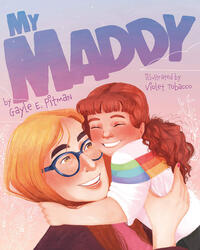
My Maddy by Gayle E. Pitman, Ph.D., and illustrated by Violet Tobacco tells the story of a child and their nonbinary parent, Maddy. Age-appropriate examples of ordinary things that are neither one thing nor the other—for instance, hazel eyes, which are neither green nor brown but a combination of both—allows young readers to gain an understanding of gender expansiveness. Filled with colorful illustrations, this book also includes a substantial note to readers addressing questions that may arise from the reading. My Maddy is an engaging story for children and adults alike.

Feeling angry and lonely after being teased by bullies, Thuy walks home alone in the snow, making her footprints look like those of animals. When she gets home, Thuy and her two mothers imagine creatures who always have courage—just like Thuy. Written by Bao Phi and illustrated by Basia Tran, My Footprints is, for young learners, a good look at self-discovery and finding your courage and confidence. A sweet and inclusive story about imagination, finding power from within, and drawing strength and courage from family and cultural heritage.
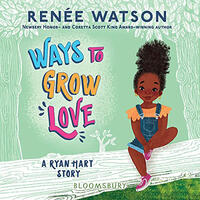
In Ways To Grow Love (A Ryan Hart Story, 2), author Renée Watson perfectly captures the feeling of being in elementary school—of sweet childhood friendships, special moments with family, summer camp shenanigans and the seeming enormity of little things. It’s in those little things that this book shines. Ryan Hart is an endearing and relatable heroine—and a passionate Black girl in whom readers will see themselves. Nina Mata’s warm illustrations scattered throughout the book are a particular gift. Young readers will be captivated by the love, strength and everyday magic of Ryan Hart and her family.
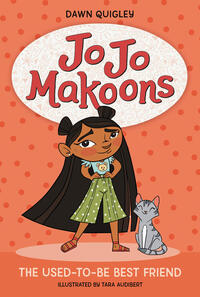
Jo Jo Makoons: The Used-to-Be Best Friend is the first in a series written by Native author Dawn Quigley and illustrated by Tara Audibert that features Jo Jo Makoons Azure. Seven-year-old Jo Jo, a member of the Ojibwe Nation, is engaging, smart, funny and attends first grade on the reservation where she lives with her family. The book illustrates the importance of culturally relevant teaching practices, and young readers will certainly recognize themselves in the thoughts and feelings Jo Jo expresses as she moves throughout her busy days. Jo Jo and her best friends will make readers—young and old—eager for the next issue in this series.
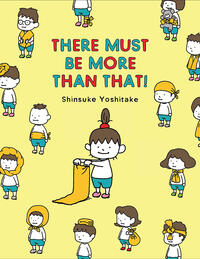
Shinsuke Yoshitake’s relatable story follows a girl whose brother tells her the future is doomed in There Must Be More Than That! Fearing the destruction of Earth, she is comforted by her grandmother, who assures her that there are always more possibilities than we are aware of at any given movement. Gentle, lighthearted and honest, this story is sure to captivate young readers and provide ample space to discuss the future that we want to be a part of and steps we should take to get there. This story subverts the notion of either-or thinking in a way that is accessible and engaging for young readers.
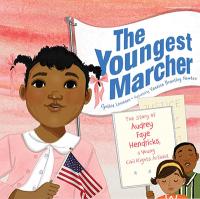
In The Youngest Marcher: The Story of Audrey Faye Hendricks, a Young Civil Rights Activist, we meet young Audrey, a real-life child in 1963 who sees the wrong in Birmingham, Alabama’s segregation laws and wants to stand against them. One of 3,000 children arrested in Birmingham in May 1963, Audrey serves as a great example for young activists today. This warm book, written by Cynthia Levinson and beautifully illustrated by Vanessa Brantley-Newton, will help introduce children to one of the biggest moments in modern civil rights history.
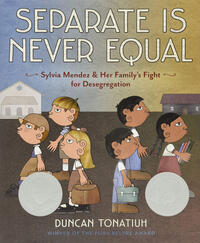
In Separate Is Never Equal, Duncan Tonatiuh tells the real story of the Mendez family’s fight in the late 1940s to desegregate schools in California, which would then allow their children to attend quality schools rather than the ramshackle place where children of Mexican families were forced to attend. Using accessible language and art gallery-worthy illustrations, Tonatiuh shows young readers some of the ways that people fight for justice. This work makes it easier for young readers to understand a complex situation through the author’s use of straightforward illustrations and language.
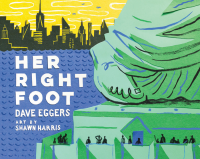
While most of us picture the crown, the torch or the book when we think of Lady Liberty, Dave Eggers’ Her Right Foot focuses on her right foot, which, he notes, is caught in mid-stride. She’s always moving because “liberty and freedom from oppression are not things you get … by standing around like some kind of statue.” Speaking directly to the reader, Eggers starts out with playful humor that leads to the heartfelt understanding that the statue stands for what we should always aspire to: action, humanity and openness.
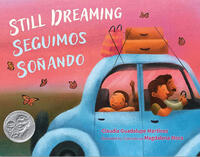
In Still Dreaming/Seguimos Soñando, author Claudia Guadalupe Martínez and illustrator Magdalena Mora lovingly capture one family’s decision to stay together during the Mexican Repatriation, an undertaught period of history when Mexican Americans were expelled from the United States. This beautiful bilingual book will remind readers of the resilience and beauty of immigrant families who fight to stay together.
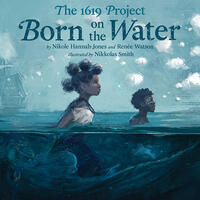
The 1619 Project: Born on the Water requires space and honest conversation—and it is well worth it. Written by Nikole Hannah-Jones and Renée Watson and illustrated by Nikkolas Smith, the book features a young student who is assigned to trace her family’s history and is distraught about not knowing those roots. Enter Grandma, who breaks it down one powerfully crafted poem at a time. She goes from ordinary people living, working and creating joy, to the Middle Passage to Black Lives Matter—and all the resistance, brilliance and life in between. This book affirms that Black history didn’t start with slavery and that “we will survive because we have each other.” A beautiful tool for being real about our history, which our young ones deserve.

Nikki Grimes’ One Last Word: Wisdom From the Harlem Renaissance contains Golden Shovel poems based on poetry from this pivotal era, with each piece accompanied by modern artwork. A Golden Shovel poem uses a line from an existing poem, and each word in that line forms the last word in each line of the new poem. Grimes cleverly executes this technique when she weaves lines and poems from the Harlem Renaissance into her new pieces.
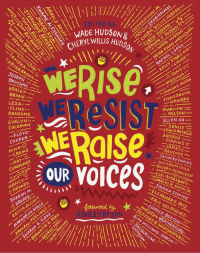
“There are more good people / than not. / They will win. / We will win / if we believe / and don’t get tired of believing.” These lines from Tameka Fryer Brown’s “Where Are the Good People?” illustrate the central theme of We Rise, We Resist, We Raise Our Voices. Motivated by the hateful rhetoric of the 2016 election, editors Wade Hudson and Cheryl Willis Hudson have collected short nonfiction pieces, poems and art by some of today’s most inspiring artists of color, including Jacqueline Woodson, Kwame Alexander and many more.
Young Readers
(Upper Elementary and Lower Middle School)
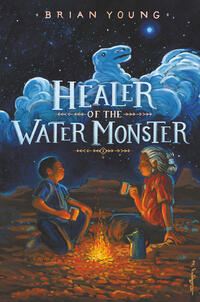
Readers of Healer of the Water Monster by Brian Young will find it easy to immerse themselves in Nathan’s world as he unexpectedly befriends a Water Monster, a Navajo Holy Being, while staying with his grandmother and uncle on the Navajo Reservation. This book explores universal coming-of-age themes such as bravery and friendship while helping readers learn more about the contemporary Navajo Nation, including Navajo science, spirituality, language and culture, along with the challenges the Navajo people face. Brian Young’s ability to center a Diné perspective of the world radiates throughout this powerful novel.
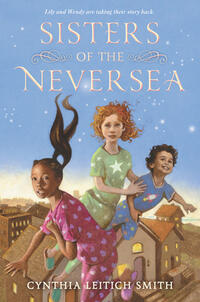
Cynthia Leitich Smith, a Muscogee Creek author, writes Sisters of the Neversea to provide readers with a refreshing counternarrative to the harmful stereotypes about Native people in J.M. Barrie’s version of Peter Pan. Smith’s version centers on Lily, a Muscogee Creek girl, and her white stepsister, Wendy, who travel to Neverland. Upon arrival, Lily and Wendy find that they will have to rely on each other, their inner strength and creative thinking to save themselves. Smith combines universal themes of family and identity with dashes of fairy dust, swashbuckling pirates, and unpredictable obstacles to create a mesmerizing adventure for young readers.
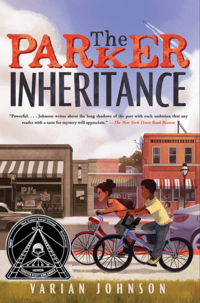
In a box of puzzles in the attic, Candice discovers a letter addressed to her grandmother. This letter answers one of her big questions—why her grandmother left town in shame—but new questions arise. Pooling their resources of deduction and book smarts, Candice and her neighbor Brandon resolve to find answers. In The Parker Inheritance, Varian Johnson’s young protagonists embark on a mystery that will force their town to address its unjust past and the stain that segregation left behind. This clever puzzle stays with you as it presents a mystery to solve: What stories are still being hidden?
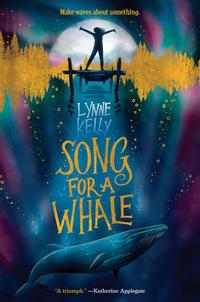
Written by sign language interpreter Lynne Kelly, Song for a Whale introduces Iris, a mechanically inclined girl who, as the only deaf student at her school, fixes radios because she understands feeling like no one is listening. When she learns about a whale who sings at a frequency that makes it difficult to communicate, she devises a plan to help him feel less alone. Her journey underscores the importance of empathetic communication, community and representation for readers young and old alike. For any young person who has felt lonely or unheard, this book will sing, and sign, to them.
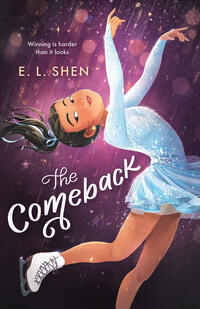
Adults and children will find it easy to cheer for Maxine Chen, the spunky protagonist in E.L. Shen’s debut work, The Comeback: A Figure Skating Novel. In addition to juggling the challenges of middle school and the pressures of competitive ice skating, Maxine has to attend classes with a student who bullies Maxine for her Chinese heritage. By following Maxine’s journey, readers, too, can learn how pride in yourself is the ultimate comeback. This middle grade novel is relatable to anyone who has struggled to love themselves fully when faced with racism. Note: This book contains racist language and gestures, including a racial slur.
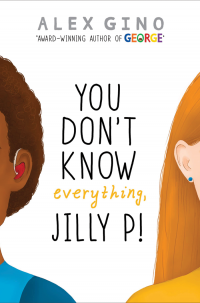
In You Don’t Know Everything, Jilly P!, author Alex Gino examines what it truly means to be an ally through the experiences of 12-year-old Jillian Pirillo, who is white and hearing. Through an online friendship with a deaf, black student who uses ASL, and by seeing the effects of her family’s inability to address racism, Jillian learns she must support other people without centering herself. This cleverly spun tale will encourage young readers to communicate more thoughtfully with people of all identities and abilities.

United States history lessons often move quickly from the Civil War to the Civil Rights Movement. But there is a fascinating history sandwiched between those two watershed moments. In Dark Sky Rising: Reconstruction and the Dawn of Jim Crow, Henry Louis Gates Jr. teamed with Tonya Bolden to flesh out the unfinished business of this period for young readers. In their exploration, they detail how freed Black people had agency in helping decide policies to ensure their full citizenship, which was later dismantled through discriminatory laws and violence. This book can help young people contextualize how U.S. policy has framed and supported white supremacy—and acknowledge our rights’ fragility.
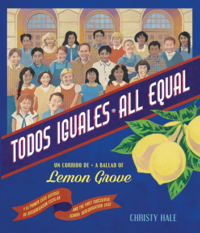
In 1930, 12-year-old Roberto Álvarez was attending Lemon Grove School, where he and other Mexican American kids learned alongside their Anglo-American classmates. When his community discovered the school board’s plan to segregate Mexican American students into a far inferior “barn” school, they fought back, choosing Roberto as the plaintiff for their groundbreaking case. Christy Hale’s Todos Iguales: Un Corrido de Lemon Grove/All Equal: A Ballad of Lemon Grove tells the true story of the first successful school desegregation case through vibrant illustrations, sheet music for a bilingual ballad, and supplementary photographs and quotes.
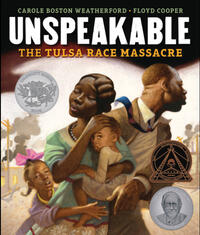
In Unspeakable: The Tulsa Race Massacre, author Carole Boston Weatherford introduces the story of an American tragedy to young readers. With elaborate illustrations by Floyd Cooper, the book reviews incidents leading up to the 1921 event, and offers the concepts of self-sufficiency, exploration, segregation, racial violence and resilience. Its age-appropriate narrative also reminds readers of their responsibility in creating an anti-racist, nonviolent society, while also evoking pride and hope.
Resources for Children’s Books:
Social Justice Books, A Teaching for Change Project reviews multicultural and social justice books.
American Indians in Children’s Literature provides recommendations and analyses of Indigenous people in children’s books.
Rediscovering African History, published by Our Ancestories, is a series of children’s books about pre-colonial African legends that provides activities for children to explore specific cultures.
